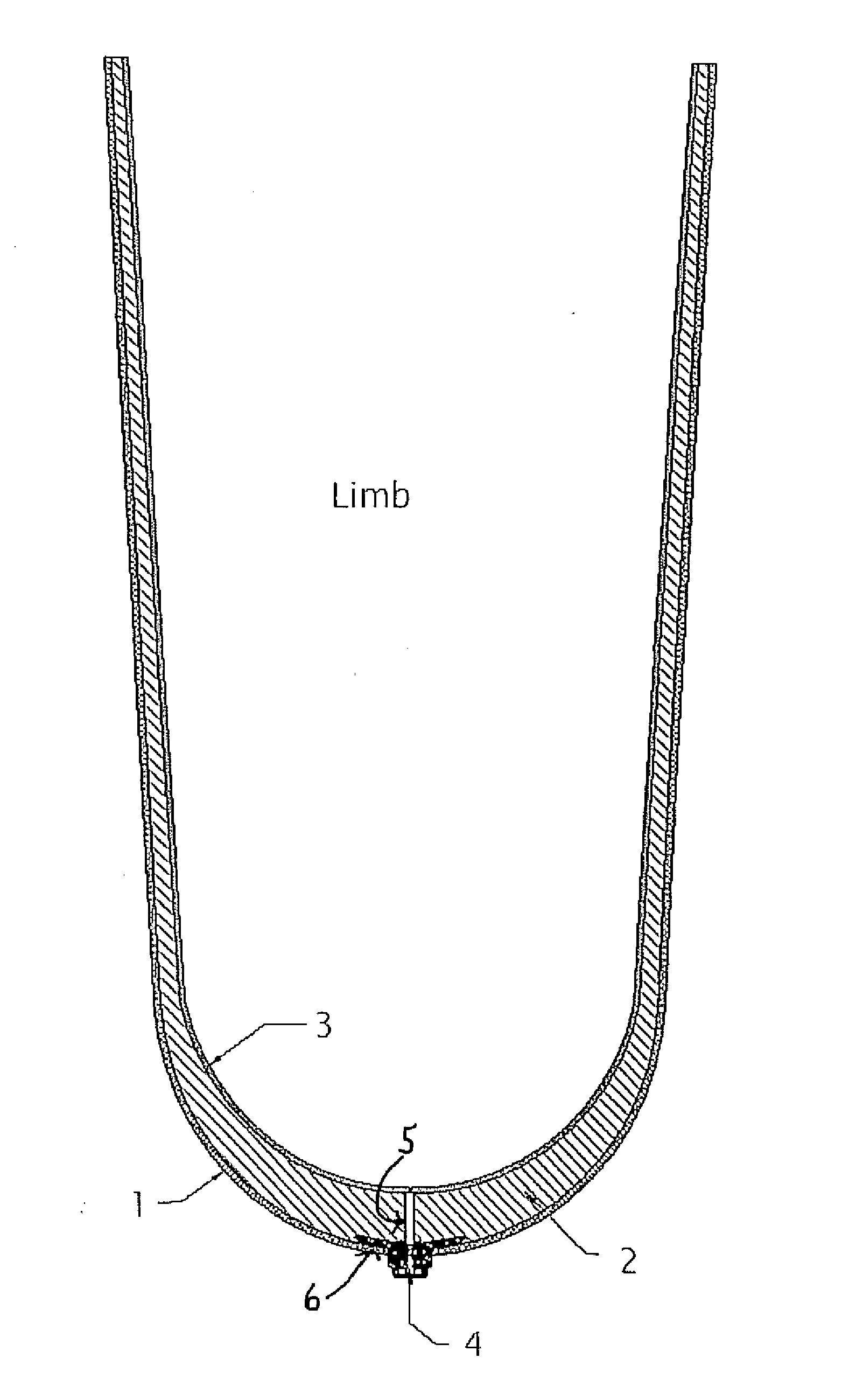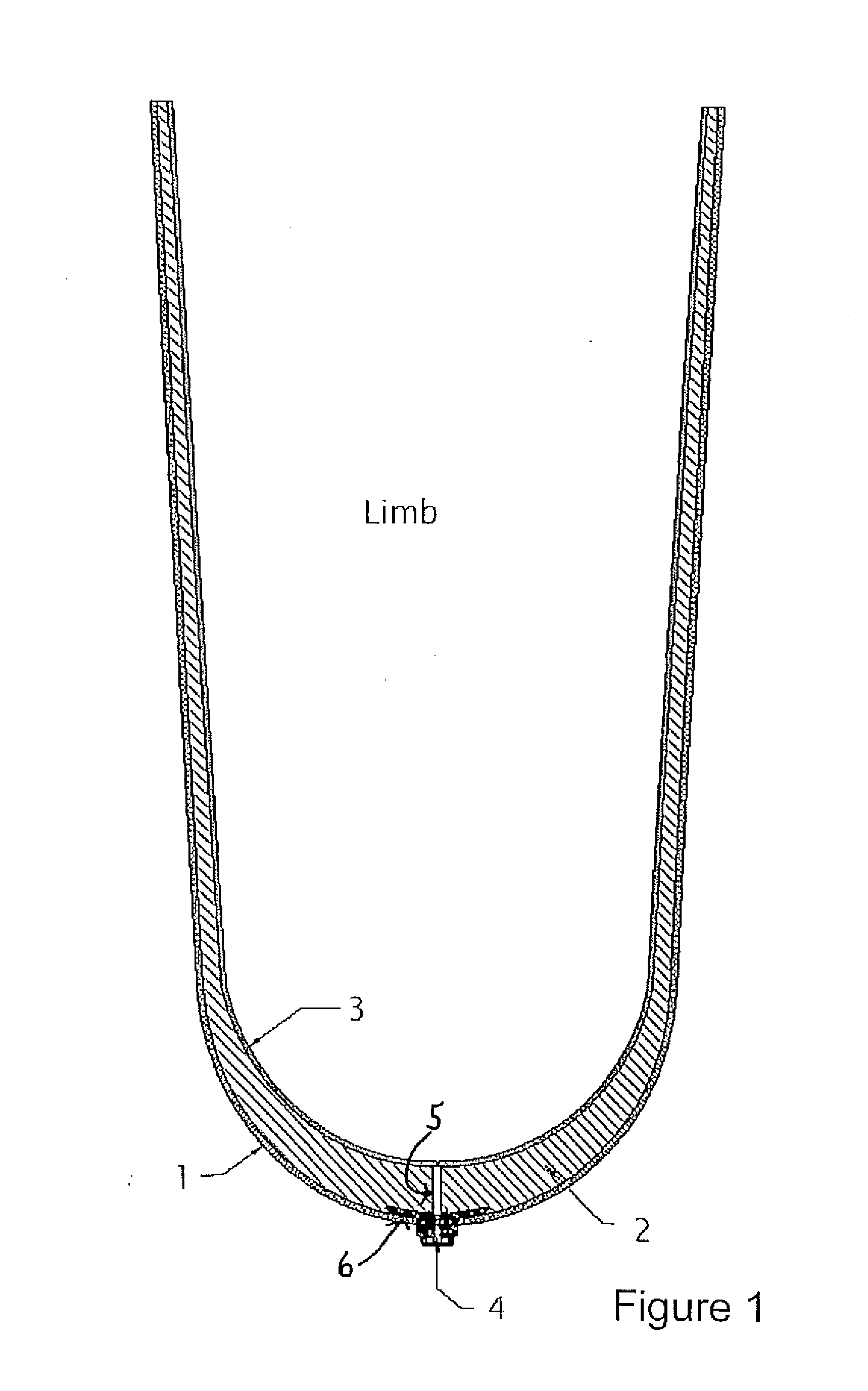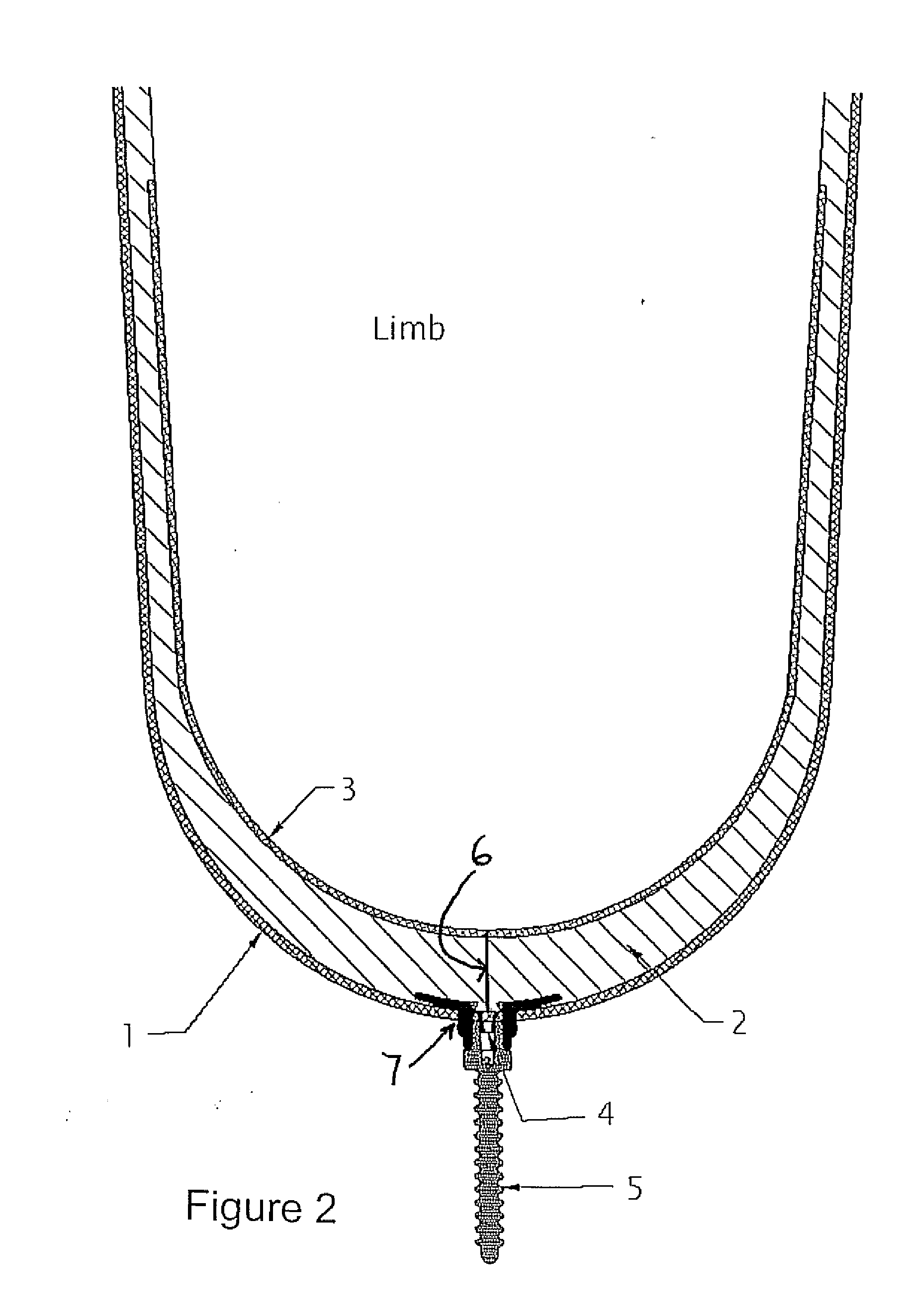Prosthetic liner with perspiration elimination mechanism
a technology of perspiration elimination and prosthetic liners, applied in the field of prosthetic liners with perspiration elimination mechanism, can solve the problems of affecting the physical interface of prosthetic patients, increasing the rate at which residual limbs perspire, and affecting the elasticity of elastomeric liners suitable for long-term skin contact,
- Summary
- Abstract
- Description
- Claims
- Application Information
AI Technical Summary
Benefits of technology
Problems solved by technology
Method used
Image
Examples
Embodiment Construction
[0017]The present invention comprises an elastomeric liner comprising a proximal edge and a distal end. The distal end comprises a distal tip. A sweat port is positioned at the distal tip. The distal tip comprises, within it or attached to it, a buttress. The buttress generally comprises a polymeric material having a degree of elasticity which is less than that of the liner, or in other embodiments, the buttress comprises a support material, such as aluminum or other metals; or rigid plastics or other materials, which are over laid with a polymeric material. In embodiments in which the buttress contacts the prosthetic socket, the polymeric component of the buttress softens the contact and prevents grinding which can wear the socket and irritate the wearer. The buttress can be embedded within the liner during liner manufacture, or in other embodiments, it is adhered to the end of the liner. It is preferably underlain by a section of the liner, regardless of whether it is embedded wit...
PUM
 Login to View More
Login to View More Abstract
Description
Claims
Application Information
 Login to View More
Login to View More - R&D
- Intellectual Property
- Life Sciences
- Materials
- Tech Scout
- Unparalleled Data Quality
- Higher Quality Content
- 60% Fewer Hallucinations
Browse by: Latest US Patents, China's latest patents, Technical Efficacy Thesaurus, Application Domain, Technology Topic, Popular Technical Reports.
© 2025 PatSnap. All rights reserved.Legal|Privacy policy|Modern Slavery Act Transparency Statement|Sitemap|About US| Contact US: help@patsnap.com



